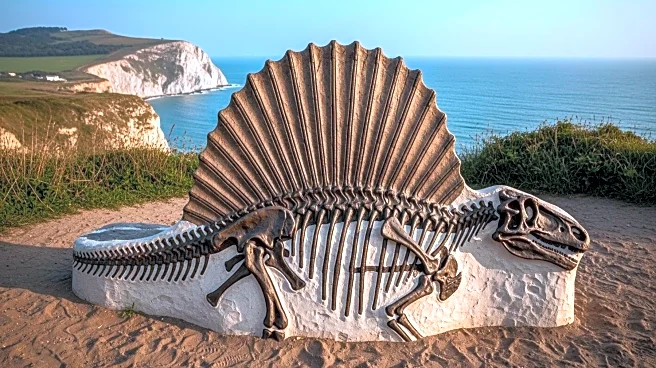What is the story about?
What's Happening?
Scientists have identified a new dinosaur species, Istiorachis macarthurae, on England's Isle of Wight, characterized by a unique sail-like structure along its back and tail. The fossils, which had been stored in a museum for decades, were re-examined by Jeremy Lockwood, a retired general practitioner and Ph.D. student. The dinosaur, part of the iguanodontian family, features elongated neural spines that suggest the presence of a sail, likely used for social signaling. This discovery provides new insights into the social behaviors and evolutionary adaptations of herbivorous dinosaurs.
Why It's Important?
The discovery of Istiorachis macarthurae offers a fresh perspective on dinosaur evolution, particularly regarding the role of social signals in their behavior. The sail-like structure may have been used for visual displays, influencing mating rituals and territorial disputes. This finding challenges traditional views that focus primarily on physical traits related to survival, highlighting the importance of social dynamics in evolutionary processes. It also enriches the understanding of the iguanodontian lineage, contributing to the broader knowledge of dinosaur biodiversity and adaptation.
What's Next?
Further research is likely to explore the evolutionary pressures that led to the development of such specialized features in dinosaurs. Scientists may conduct additional studies on other iguanodontian fossils to identify similar traits and understand their evolutionary significance. This discovery could also inspire new investigations into the social behaviors of other dinosaur species, potentially leading to a reevaluation of their ecological roles and interactions.
Beyond the Headlines
The study underscores the importance of re-examining existing fossil collections, as overlooked specimens can yield significant scientific discoveries. It also highlights the role of amateur researchers and interdisciplinary collaboration in advancing paleontological knowledge. The findings may prompt discussions about the evolutionary mechanisms that drive the development of non-survival traits, such as those used for social signaling.
AI Generated Content
Do you find this article useful?













